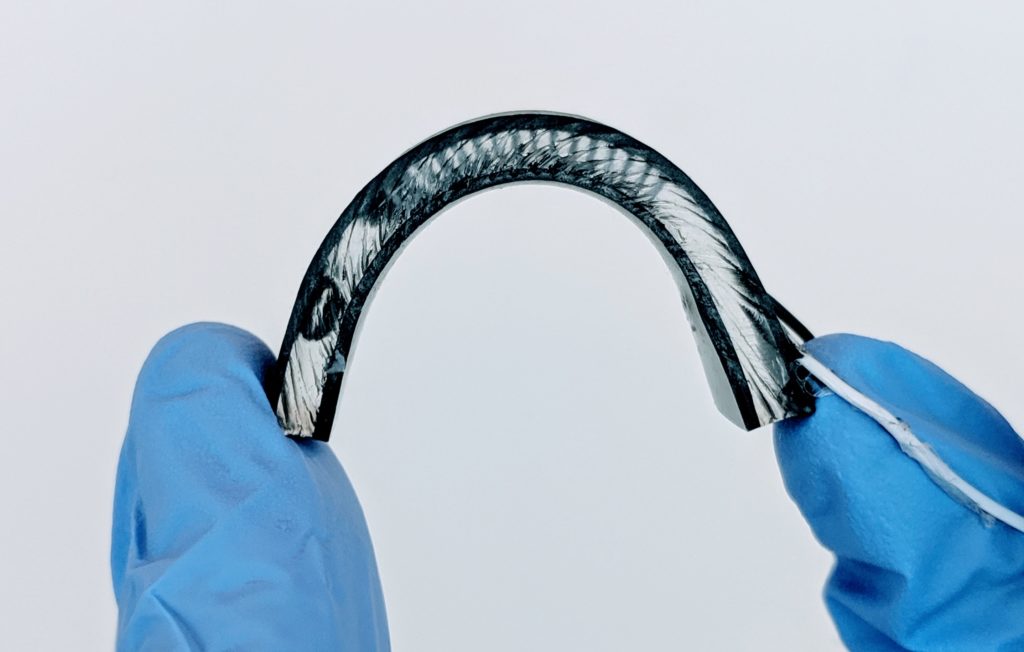Center Develops Flexible Thermoelectric Generators to Enable Body Heat Powered Wearable Devices
Outcome/Accomplishment
The NSF-funded Engineering Research Center (ERC) for Advanced Self-Powered Systems of Integrated Sensors and Technologies (ASSIST), headquartered at North Carolina State University, developed a novel silicone compound that allows flexibility in thermoelectric generators (TEGs). This advance enables the ability to integrate TEGs into wearable devices and minimizes heat losses.
Impact/Benefits
A high-performance, flexible TEG has the potential to run continuously on body heat, without the need for charging or battery replacement. This promises to overcome the limitation of rigid TEGs that cannot conform to the body.
Explanation/Background
Engineers at ASSIST developed flexible TEGs using stretchable, liquid metal-based interconnects. The interconnects were then encased in a novel, high thermal conductivity silicone elastomer, which allows flexibility. The resulting flexible package conforms to, and maintains contact with, curved surfaces, even when bending or stretching. ASSIST's flexible thermoelectric generators also provide the highest power levels reported to date for flexible TEGs.
TEGs integrated into wearable devices and placed on the body can convert small temperature differences between the body and the surrounding environment to electricity. Flexible TEGs can also provide electricity in industrial settings and other situations where excess thermal energy is available.
Location
Raleigh, North Carolinawebsite
Start Year
Biotechnology and Healthcare
Biotechnology and Healthcare
Lead Institution
Core Partners
Fact Sheet
Outcome/Accomplishment
The NSF-funded Engineering Research Center (ERC) for Advanced Self-Powered Systems of Integrated Sensors and Technologies (ASSIST), headquartered at North Carolina State University, developed a novel silicone compound that allows flexibility in thermoelectric generators (TEGs). This advance enables the ability to integrate TEGs into wearable devices and minimizes heat losses.
Location
Raleigh, North Carolinawebsite
Start Year
Biotechnology and Healthcare
Biotechnology and Healthcare
Lead Institution
Core Partners
Fact Sheet
Impact/benefits
A high-performance, flexible TEG has the potential to run continuously on body heat, without the need for charging or battery replacement. This promises to overcome the limitation of rigid TEGs that cannot conform to the body.
Explanation/Background
Engineers at ASSIST developed flexible TEGs using stretchable, liquid metal-based interconnects. The interconnects were then encased in a novel, high thermal conductivity silicone elastomer, which allows flexibility. The resulting flexible package conforms to, and maintains contact with, curved surfaces, even when bending or stretching. ASSIST's flexible thermoelectric generators also provide the highest power levels reported to date for flexible TEGs.
TEGs integrated into wearable devices and placed on the body can convert small temperature differences between the body and the surrounding environment to electricity. Flexible TEGs can also provide electricity in industrial settings and other situations where excess thermal energy is available.

